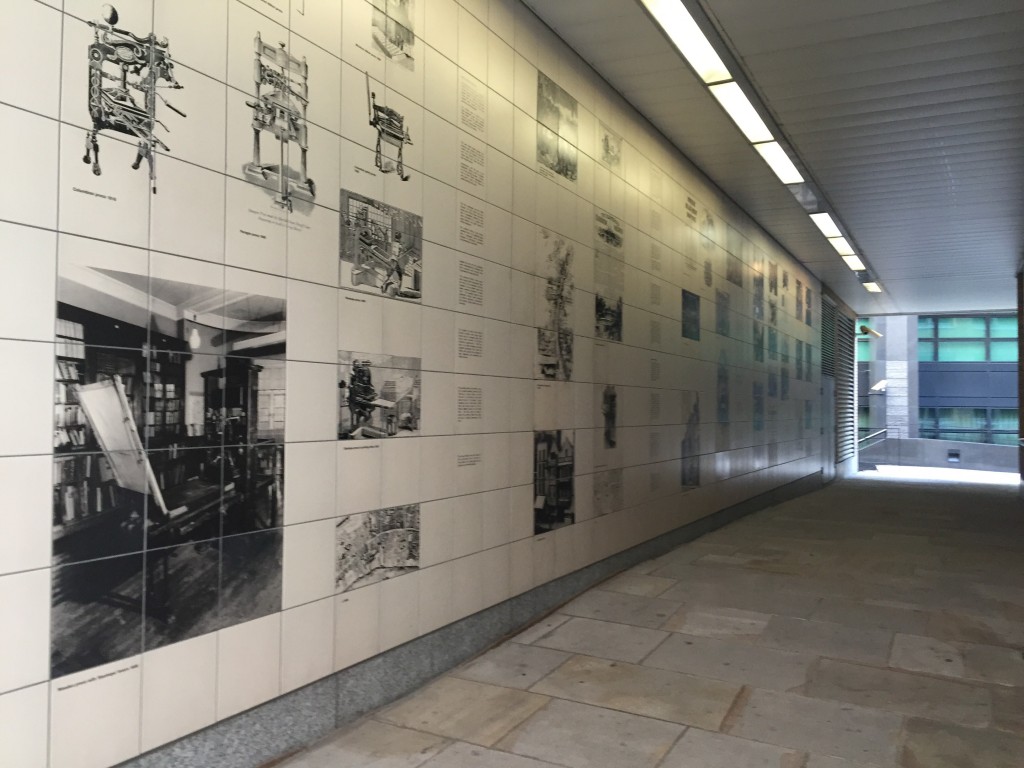On the hunt for hidden crypts…
All of our first year law undergrads took part in an exercise in week one of their LLB where they escaped City and went to visit a number of buildings of significance in the local area, before tackling some research questions.
They were then asked to write a blog post inspired by their travels. 21 winners were selected from all those posts submitted – this is one of those – thanks to Amreen Musa.
How would you feel if you were thrown together with a group of people you hardly knew, and told to explore London for places of historical value? This week, that is exactly what happened to me during an ‘out and about’ exercise with my university, which, as you can guess consisted of going out and about. As daunting as this sounds, it was actually a really fun experience. A group of about ten others, including myself, visited several locations to view and understand their historical worth. I quickly learnt that we were not a very organised bunch as we set off without knowing which location we were going to first or where it was. Nevertheless, it was still an interesting exercise and I found it remarkable that having lived in London for eighteen years now, I had no idea such places like Magpie Alley Crypt and St. Sepulchre Church existed. They were truly remarkable places and I was ecstatic by learning about the history and culture surrounding these places. It definitely exposed my nerdy side – not knowing I had one before.
Being a generation that relies heavily on smartphones telling us where to go, one of the places that was most difficult places to locate was Magpie Alley Crypt. When we typed this into google maps it appeared as if the place did not exist. Of course our first thoughts were that the university was just pulling our legs and making us look for non-existent locations.
However, miraculously, we eventually discovered Magpie Alley and I can honestly say that, after walking around for hours on end in my knee-high heeled boots, it was a relief. It was a beautiful wall painted with Fleet Streets’ past of history of old newspaper buildings and printing machines.
As well as this was a passage leading to the Crypt which was home to the order of the monks known as the White Friars. It was quite fascinating for me that this place was like a huge encyclopaedia placed on a wall which could be stumbled across by any person just walking by. It was almost quite secretive and secluded- which explains why it is nowhere to be found on any maps. Now you have been told this almost ‘secretive’ place, it is worth the time to have a look at the crypt and see the beautiful images.

One place that I found to be of particular interest (and a lot easier to locate), was the St Sepulchre Church. The history of this church is captivating yet shocking. I would have never guessed that a Church- a place of holiness- would be associated with what I believe was the worst period of Britain’s history- capital punishments. The Church was neighbour to Newgate Prison where criminals were executed. Usually, around midnight, the Church clerk would ring a bell, named ‘the execution bell’, to mark a person’s execution. Though this cannot be considered a direct role in capital punishments, the fact that the Church would ring this bell intrigues me. To this day that bell is still located inside the church enclosed in glass, making me believe it is placed there as a reminder of what I consider was a cruel injustice to criminals.
The nursery rhyme ‘Oranges and Lemons’ relates to these executions which took place at Newgate Prison, mentioning the ‘ringing bells of St Clements’ (the Church). Though a nursery rhyme, it has a sinister story depicting a person who borrowed money for oranges and lemons and could not pay it back. His lack of money meant he could not afford a court trial resulting in his execution. Who would have thought a child’s nursery rhyme would contain a story so menacing?
![St Sepulchre Church [Credit: Katharina Vidojevic]](http://blog.lawbore.net/wp-content/uploads/2016/01/StSepulchre-e1452628749258-225x300.jpg)
Though this ‘out and about exercise’ was an attempt to ‘break the ice’ within our groups, it made me realise the real and true historical value of the buildings that surround me. It may have just been easier to sit at my computer and just write a lot of historical facts, but actually visiting the places puts things into perspective. It definitely was a worthwhile experience and I would recommend other people to just stop with their busy lives and value these mesmerising places that encircle them.
[1] Emily Dugan. (2015). Court fees are a breach of human rights, says leading criminologist. Available: http://www.independent.co.uk/news/uk/home-news/court-fees-are-a-breach-of-human-rights-says-leading-criminologist-a6669606.html <Last accessed 2015>

